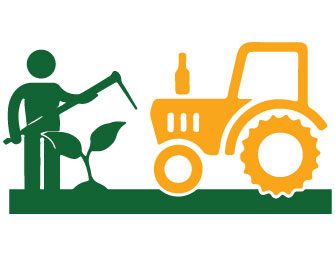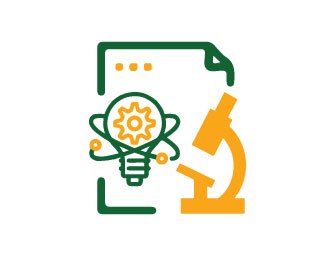Priority Intervention Areas
- PIA 1: Natural Resources & Environment Management
- PIA 2: Market Access, Trade and Financial Services
- PIA 3: Enhanced Production and Livelihood Diversification
- PIA 4: Disaster Risk Management
- PIA 5: Research, Knowledge Management and Technology Transfer
- PIA 6: Peace Building, Conflict Prevention and Resolution
- PIA 7: Institutional Strengthening, Coordination and Partnerships
- PIA 8: Human Capital, Gender and Social Development

PIA 1: Natural Resources & Environment Management
Strategic Objective: To enhance drought-prone communities’ access to and use of sustainably managed natural resources and environmental services.
1.1 Water Resources Development and Management
Expected Outcome: Enhanced Water Resources Development and Proper Management for Sustainability and Equitable Access
Strategic Interventions:
Regional assessment on transboundary water resources, both surface water and groundwater
Promotion on regional framework for transboundary water management
Capacity building in handling transboundary waters
Mapping and increased investment for enhanced transboundary water availability for livestock and concomitant infrastructure to improve productivity, reduce resource based conflict and increase trade capacity.
1.2 Rangeland Management and Pasture Development
Expected Outcome: Rangelands and pastures under sustainable management are increased
Strategic Interventions:
Strengthen policy, legal and regulatory frameworks to enhance cooperation for regional and trans-boundary natural resource management, including water.
Upscale trans-boundary sustainable land management techniques, technologies and institutions.
Strengthen capacity of national and cross border local institutions to implement the use of fit for purpose technology in securing access to land and natural resources.
1.3 Environmental Management and Bio-diversity
Expected Outcome: Conservation and sustainable use of ecosystems services enhanced; Biodiversity loss halted; Environmental service payment improved
Strategic Interventions:
Environmental Impact Assessment (EIA)
Social and Economic Impact Assessment (SEIA)
1.4 Development of Renewable Energy
Expected Outcome: Enhanced energy supply for the ASAL region
Strategic Interventions:
Establish Cross-Border demonstration for bio-diversity and wildlife conservation
Develop regulatory frameworks to reduce pollution
Develop policies and legal frameworks to promote renewable energy
1.5 Land Governance
Expected Outcomes:Land Governance in the IGAD region enhanced & the capacity of national and cross border local institutions strengthened
Strategic Interventions:
Harmonise land government frameworks on land use in areas with transboundary implications.
Undertake capacity needs assessment at national and cross border areas
Organize capacity development trainings for national and cross border institutions

PIA 2: Market Access, Trade and Financial Services
Strategic Objective: To improve transport, market infrastructure, and financial services in ASALs.
2.1 Access to Secure and Affordable Financial Services
Expected Outcome: Enhanced access to secure and affordable financial services
Strategic Interventions:
Strengthening and harmonization of regional financial services including money transfer mechanisms within the region especially unbanked areas to expedite linkage to rural, urban, transboundary and regional markets.
2.2 Regional Trade
Expected Outcome: Enhanced regional trade
Strategic Interventions:
Develop policies that facilitate regional and cross border trades.
Rationalization and harmonization of transboundary tariffs and non-tariff barriers.
Developing the warehouse receipt system and linkage into the regional warehouse receipt system.
Improvement and transboundary and regional harmonization of standards and quality assurance.
Development of capacity to actively participate in regional trade arrangements and protocols and to negotiate flexible rules of origin requirements with regional trade partners to ensure access to regional and international markets.
Establish cross-border markets and aggregation markets to facilitate agricultural commodity trading.
Promotion of agro fairs to link value chain across the region.
Establish trace-ability system across value chains.
Development and harmonization of infrastructure and transportation facilities to enhance market access and trade.
Development of road and transport infrastructure connecting the countries in the region, and linking to main border points and ports to facilitate cross-border, regional and international trade with attention to the needs of landlocked countries in the region.
Establish and/or strengthen capacity of border commission in the region.
2.3 Regional Market Information Systems
Expected Outcome: Improved access to reliable market information for buyers and sellers
Strategic Interventions:
Strengthen regional and cross border market information systems to enable traders and the business community take prudent and optimal decisions in relation to regional trade.
Improved gathering, analysis, communication & dissemination of crop, livestock and fish markets information to all stakeholders.
2.4 Insurance Services
Expected Outcome: Livestock/Agricultural commodity insured
Strategic Interventions:
Undertake feasibility study on delivery mechanisms
Awareness creation among target participants
Establish partnership between government and private sector
Design the insurance packaged and implement
Monitoring and evaluation of the programme

PIA 3: Enhanced Production and Livelihood Diversification
Strategic Objective: To increase the adaptive capacities of the drought-prone ASAL communities.
3.1 Fisheries and Apiculture Development
Expected Outcome: Increased ASALs Fishery, honey and wax production, and productivity
Strategic Interventions:
Harmonized management of trans-boundary fisheries resources for enhanced food and nutrition security and tradable surplus.
Development and implementation of trans-boundary fisheries co-management plan.
Facilitation of fish trade on cross-border areas
3.2 Crop and Livestock Disease and Pest Control and Management
Expected Outcome: Safe and healthy crop and livestock products
Strategic Interventions:
Establishment of reference laboratories for crop and livestock diseases and pests.
Capacity development of local institutions with special attention to cross border animal health committees.
Improved and harmonized national, bilateral and regional standards and quality assurance and sanitary and phytosanitary framework for enhanced smooth flow of regional and international trade.
Strengthen regional cooperation and harmonize trans-boundary initiatives in reducing losses from pests and diseases.

PIA 4: Disaster Risk Management
Strategic Objective: To enhance drought disaster management in the IGAD Member States
4.1 Contingency Planning
Expected Outcome: Reduced vulnerability to disaster risk in drought-prone communities.
Strategic Interventions:
Regional capacity development on early warning and emergency response mechanisms.
Strengthening of regional cooperation on community risk reduction and climate adaptation.
Updating of Regional Risk Atlas based on the production national Atlases.
4.2 Climate Change Adaptation & Mitigation
Expected Outcome: Enhanced community Resilience
Strategic Interventions:
Develop a harmonised Early warning system with common architecture and comparable across the region
Enhance capacity of ICPAC to effectively forecast weather/climate and support member states
Strengthen climate change negotiation skills of member states

PIA 5: Research, Knowledge Management and Technology Transfer
Strategic Objective: To improve the utilization of knowledge for drought resilience in member states.
5.1 Promote the Network of National and Regional Dryland Collaborative, Applied and Adaptive Research Centers
Expected Outcome: Robust learning in drought-prone communities promoted as well as applied and adaptive research aligned to the development priorities of the resilience agenda.
Strategic Interventions:
Promote the network of regional dryland collaborative, adaptive and applied research centres.
Enhance governance of research institutes in the region to harmonize research quality and relevance in the region.
Share good resilience practices in the region.
Regional capacity development for Dry Lands Research Centers to meet the needs of the regional agricultural sector, including climate change.
Enhance capacity and deliberate action to harness and integrate indigenous knowledge as a source of innovation for the region.
Enhanced and regionally harmonized food and nutrition security monitoring and planning.
Establish and strengthen data management systems
5.2 Results Measurement, Learning and Decision Making
Expected Outcome: Improved evidence-based decision-making process.
Strategic Interventions:
Design appropriate monitoring system for CPPs, and RPP
Build partnership in resilience measurement and analysis
Undertake resilience monitoring and analysis
Organize platforms to discuss reports of resilience analysis using the monitoring system developed

PIA 6: Peace Building, Conflict Prevention and Resolution
Strategic Objective: To achieve peace and stability in the IGAD region.
6.1 Peace Building and Mediation Mechanisms
Expected Outcome: Reduced incidences of violent conflict in drought-prone communities
Strategic Interventions:
Strengthen trans-boundary and regional mechanisms for peace building and conflict resolution for different land and water for production uses.
6.2 Transnational Security Threats
Expected Outcome: Reduced organized crime, extremism and terrorism incidents in drought-prone communities (cross border areas)
Strategic Interventions:
Build capacity of the Conflict Early Warning and Early Response Unit (CEWERU) to fulfil its mandate
Strengthen collaboration between security and Law Enforcement Agencies (LEAs), the ASAL communities and other stakeholders
Strengthen cross-border collaboration between LEAs and security agencies

PIA 7: Institutional Strengthening, Coordination and Partnerships
Strategic Objective: To strengthen the institutional capacity, coordination structures and partnerships for effective implementation of IDDRSI.
7.1 Coordination, Institutional Strengthening, Capacity Building
Expected Outcome: Effectively functioning institutional arrangement to implement IDDRSI at regional and national level
Strategic Interventions:
Strengthen protocols, partnerships, networks and collaboration for trans-boundary drought resilience interventions.
Strengthen coordination mechanisms, interaction and functional linkages between National and regional IDDRSI Secretariat.

PIA 8: Human Capital, Gender and Social Development
Strategic Objective: To increase equitable access to basic social services in drought-prone areas
8.1 Health and Nutrition
Expected Outcome: Access and quality of health and nutrition for cross border communities and refugees enhanced
Strategic Interventions:
Establish a specialized institution for health and nutrition to focus vulnerable and marginalized groups in the ASALS
Develop appropriate health referral mechanisms for ASALs (health infrastructure, access to quality regulated medicines and medical products Health workforce and financing)
E-health, telemedicine established in the ASALs.
Real time monitoring of services during emergencies/prevention and treatment for moderate and severe acute malnutrition for the infants, young children and women of reproductive age in ASAL)
Alternative interventions to increase community resilience to disasters built
Surge mechanism for health and nutrition which expand and contract service delivery in drought period established
8.2 Education and Training
Expected Outcome: Access and quality of education services for cross border communities and refugees enhanced.
Strategic Interventions:
Undertake affirmative action measure to increase access and funding for ASAL students taking into account the gender dynamics
Establish platforms for E-learning, distance learning and continuing professional development specific for ASAL in partnerships with Universities and learning institutions
Establish surge mechanism for education which expand and contract service delivery in drought period
8.3 Gender Equality and Women’s Empowerment
Strategic Objective: Promote Gender equality and women’s empowerment
Expected Outcome: Access and quality of education services for cross border communities and refugees enhanced.
Strategic Interventions:
Develop affirmative programs to reinforce innovation driven livelihood strategies by and for women in drought prone communities
Gender and sex disaggregated gender resilience data collected analysed and disseminated
Operationalize gender resilience working group
Develop and roll out capacity building programs for gender mainstreaming in the CPPs
Enhancing women’s voice in decision-making, leadership and peace-building
Promoting women’s economic empowerment
Ending violence against women and girls
Strengthen Member State institutional capacity and effectiveness to enhance delivery of result on gender equality and the empowerment of women
8.4 Migration and Displacement
Strategic Objective: Promote safe, orderly and regular migration and advocate for migration as an adaptation strategy
Expected Outcome: Increased preparedness in preventing and responding to large population movements and displacement
Strategic Interventions:
Promote regional integration measures through the adoption of the IGAD protocol on free movement of people as well as the transhumance
Promote Diaspora engagement in development and humanitarian response in ASALs
Promote Migration as an adaptation strategy to mitigate the adverse effects of climate change and weather variability, including migration as a form of household income diversification
Create linkages between National Coordination Mechanisms in member states that coordinate migration issues and IDDRSI focal points (Entry Points: ICPAC, National Meteoritical Centres, DRM authorities, Ministries of Environment| CEWARN, CEWERUs| IDDRSI: Focal points|)
Create linkages between Regional Consultative Process + Regional Migration Coordination Committee and Resilience Fora (IDDRSI Platform etc.)
Improve the conditions for local integration and building self-reliance of refugees, IDPs and host communities protracted refugee situations can be improved.
Capacity development to better understand migration issues in Member states
Improve data collection through the Statistical Unit to be established in IGAD with support from AUC/AfDB, mechanisms for sharing of data is essential/IGAD data and information sharing policy needs to be developed

